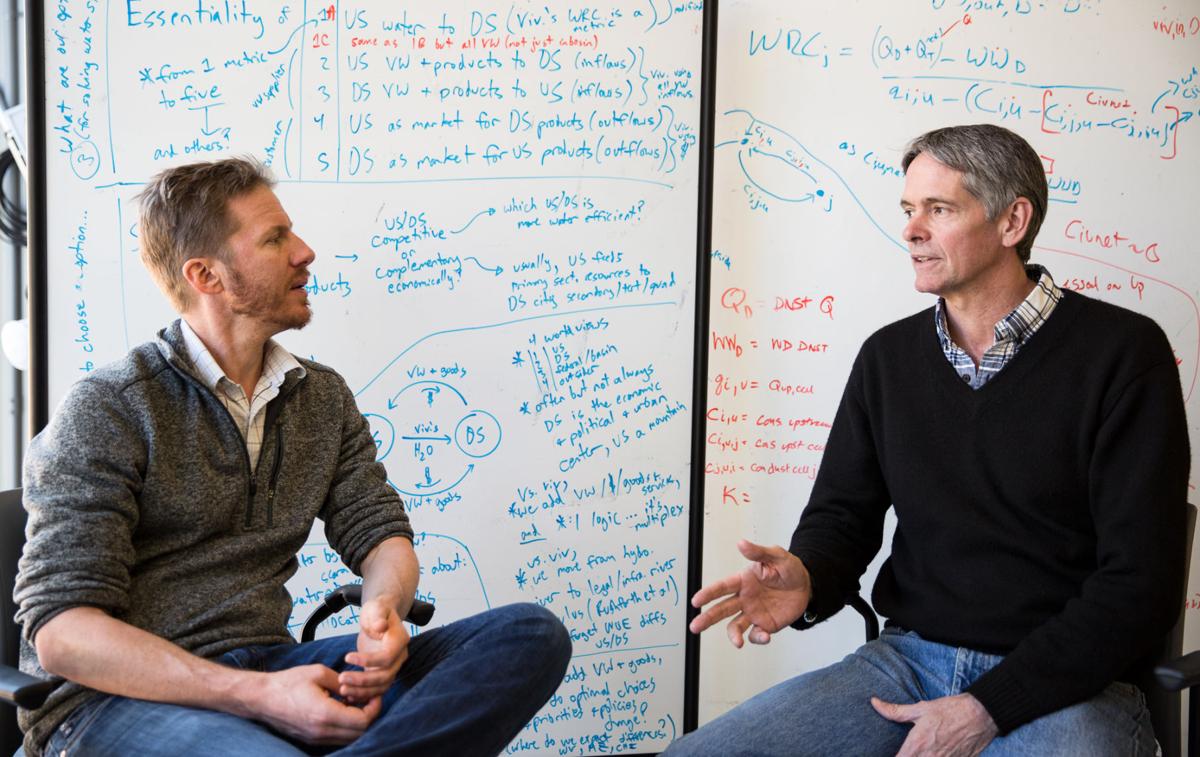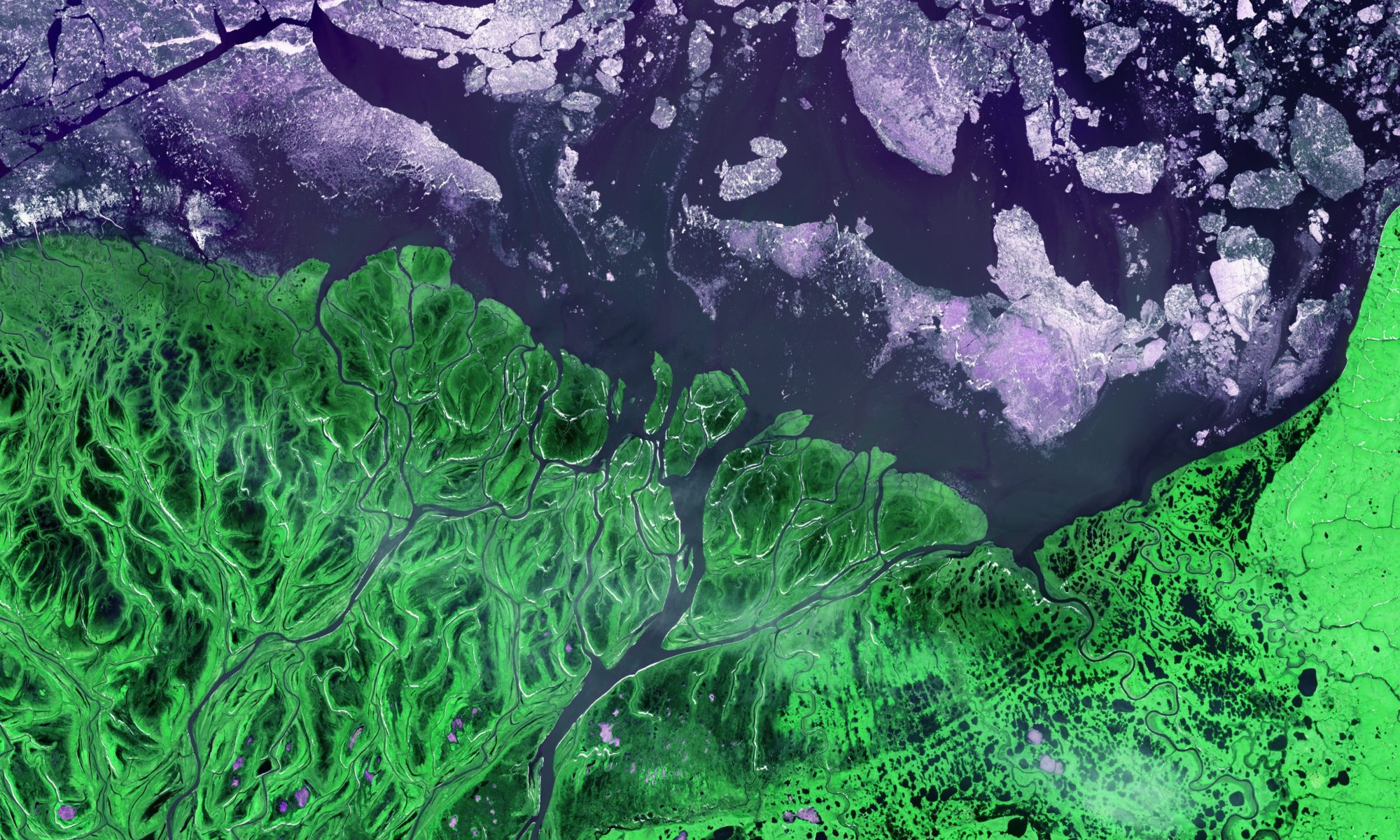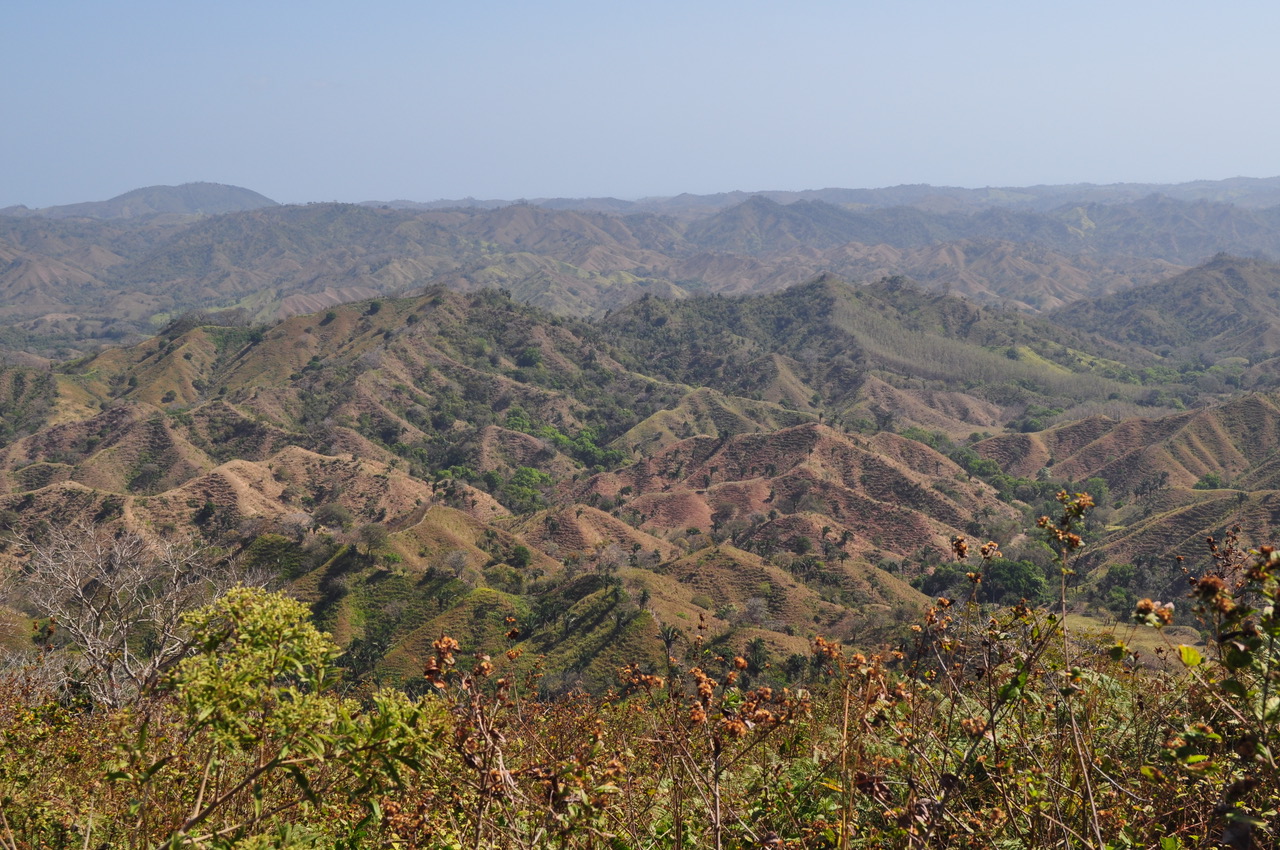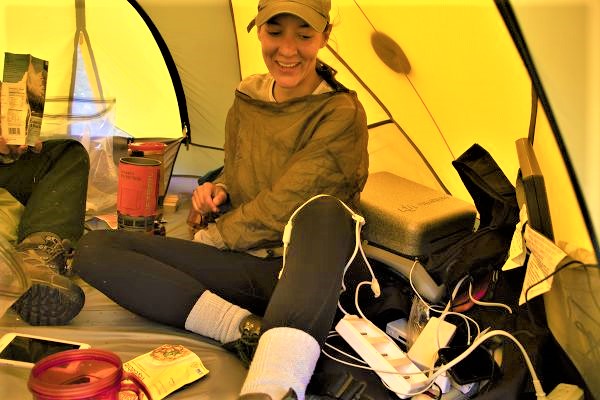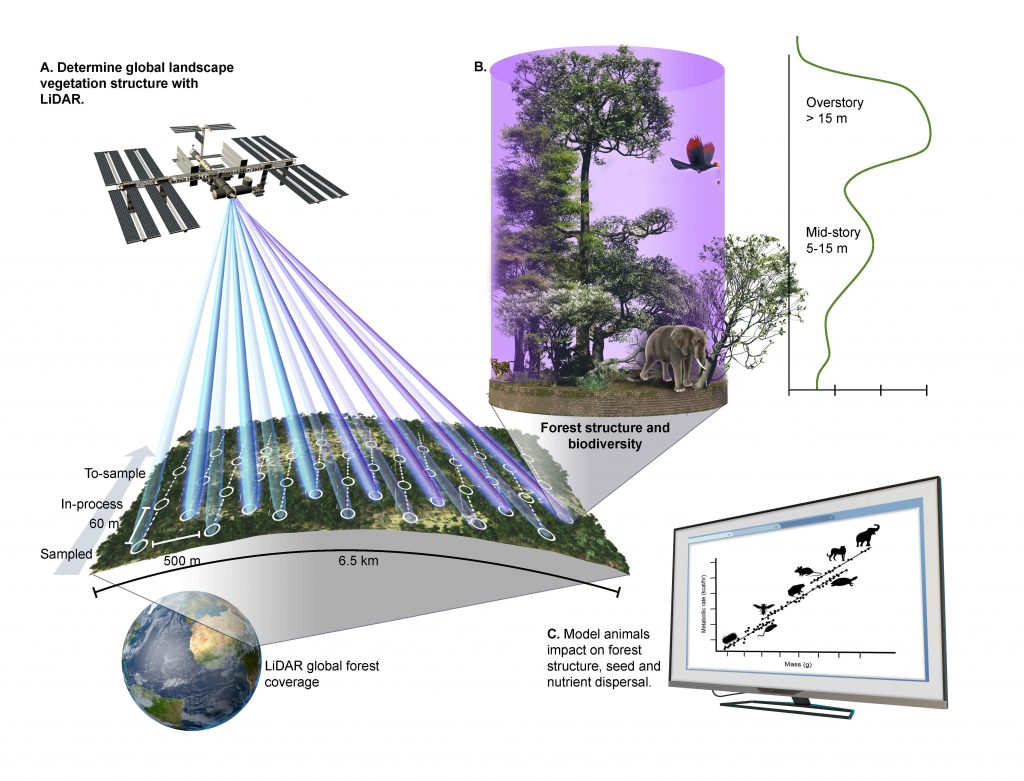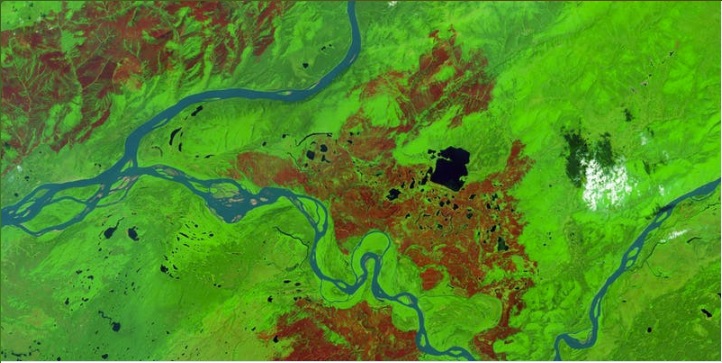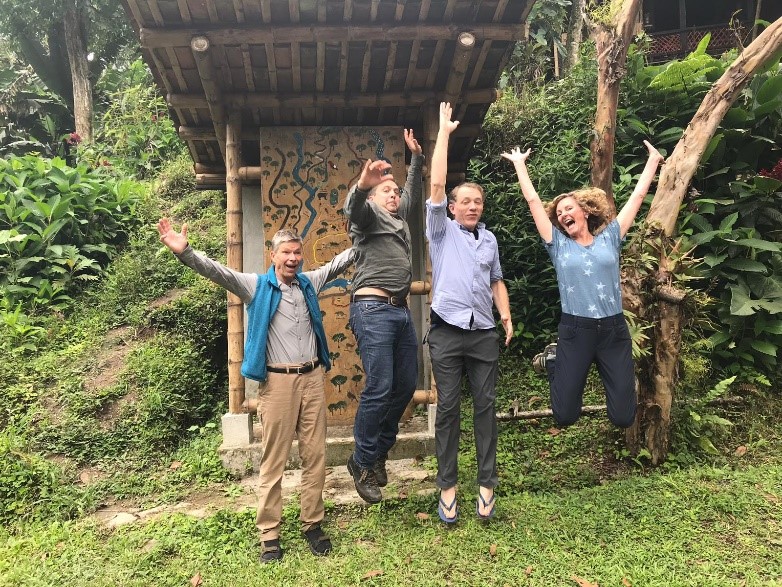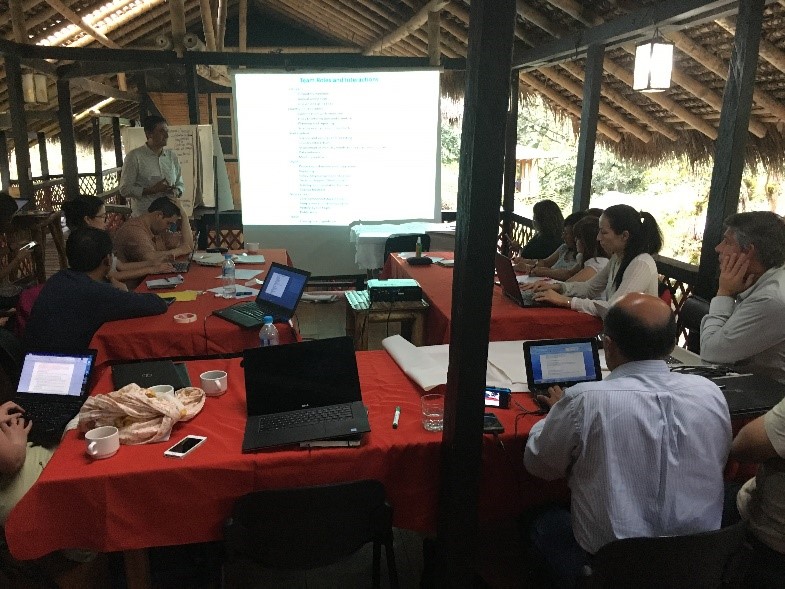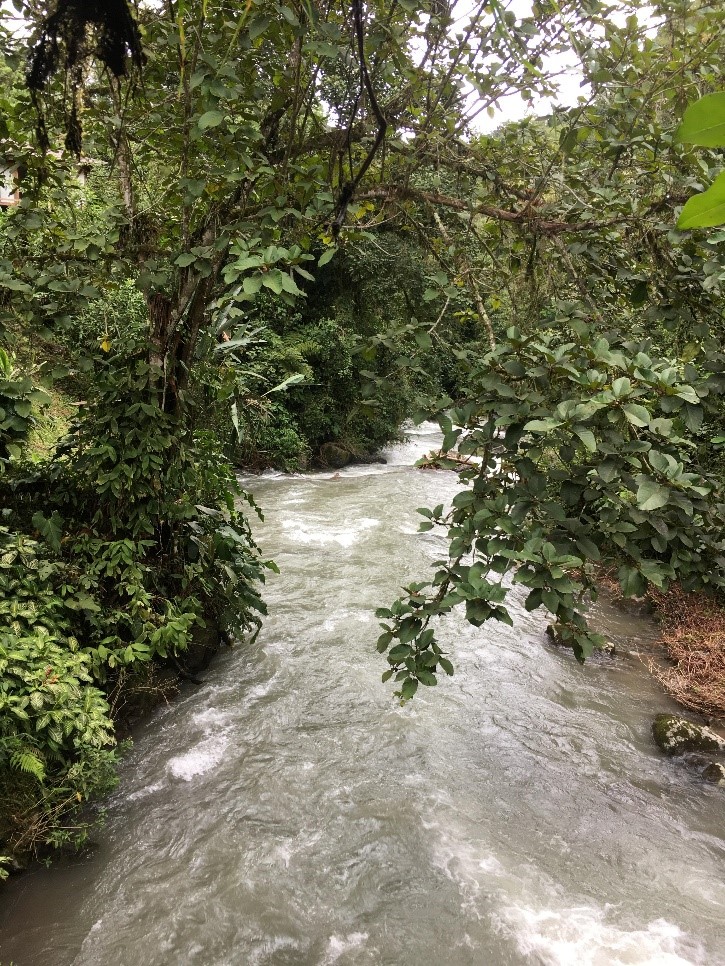
The 5th meeting of the ABoVE Science Team was held in San Diego, CA from May 20th-23rd 2019. There were over 125 attendees from NASA and other US federal agencies, Alaska, and a variety of Canadian federal agencies and tribal organizations. There were also many people from US, Canadian, and European universities. The goal was to collectively assess the latest in ABoVE science via a series of invited plenary talks, partner presentations, posters sessions, and lively breakout discussions. Invitational travel helped a number of students, postdoctoral researchers and collaborators attend. Many of the 84 poster presentations were led by students and postdocs, and the afternoon poster sessions provided vibrant and productive interactions among meeting participants.
Results from the 66 NASA-funded projects as well as 21 affiliated projects were discussed via the invited plenary and partner presentations as well as during the poster sessions. In addition, the 19 ABoVE Phase-2 PIs gave speed talks and posters on their newly funded projects. The plenary presentations were all excellent, nicely placing ABoVE research in a broader context. These included talks on Arctic vegetation dynamics, gaps in our understanding of the role snow plays in Arctic and boreal ecosystems, fire disturbance and legacy carbon, Indigenous perspectives and co-production of knowledge, and integrated ecosystem modeling, among others. Partner presentations nicely complemented the plenaries and breakout session discussions of synthesis activities by providing overviews of existing and potential synergies with large research programs like NGEE-Arctic, POLAR Canada, Global Water Futures, and the Canadian Forest Service. All presentations, including breakout session reports, can be downloaded from the online meeting agenda (no login required).
One key highlight was a plenary presentation on Indigenous Perspectives and Co-production of Knowledge by Mandy Bayha and Joanne Speakman, students indigenous to the Sahtu Region of the Northwest Territories. Their presentation nicely articulated the importance of combining traditional knowledge and western science to tackle climate change issues, especially in the rapidly changing Arctic where indigenous residents are already experiencing drastic ecosystem changes that threaten their livelihoods. Joanne and Mandy also gave a scintillating recount of their experience flying in a NASA G-III aircraft during a UAVSAR collect and an associated field data collection excursion in the 2018 field season. Read an associated story here.
The scientific presentations highlighted many of the high impact research results coming out of Phase-I ABoVE projects. For example, a presentation on the seasonal atmospheric CO2 amplification demonstrated that Siberian ecosystems are the dominant contributor to the amplification of the annual cycle of atmospheric CO2. Temperate ecosystems are the second most important contributor, while boreal and Arctic ecosystems in North America have not contributed substantially to the increasing CO2 amplitude. These results are consistent with differential ground- and satellite-based trends in greening and browning between Siberia and Arctic-Boreal North America. Indeed, another presentation explored the drivers of greening and browning (as measured via Landsat NDVI time-series) in interior Alaska demonstrated that forest composition and structure have strong impacts on NDVI trends, concluding that browning and greening forest patches occur naturally across the boreal landscape and do not necessarily reflect large-scale changes in boreal ecology.
There was a productive breakout session presenting and finalizing airborne data collection plans for the 2019 field season which will include AVIRIS-NG, UAVSAR, and LIVIS acquisitions. It is also clear that airborne data collected during the previous field seasons continue to pay huge dividends. For example, L-band data from UAVSAR and P-band data from AirMOSS have led to significant improvements in our ability to remotely quantify active layer thickness (ALT). These SAR based approaches for assessing ALT will continue to mature through on-going ABoVE research, ultimately paving the way for large scale assessments of ALT via data from the forthcoming NISAR mission. In addition, data acquired by the next generation Airborne Visible Infrared Imaging Spectrometer (AVIRIS-NG) is being successfully used to detect areas of CH4 enhancement associated with thermokarst and other permafrost disturbance within the ABoVE domain. These results will help constrain uncertainties in the current Arctic-boreal CH4 budget and the amount of future CH4 emissions in the permafrost carbon feedback.
Indeed, it was clear that ABoVE continues to be innovative, productive and impactful, with >135 publications, with several in top tier journals such as Nature, Science, and PNAS. ABoVE also continues to broaden its impact via increased sharing of datasets through the ORNL DAAC. Currently there are 80 ABoVE data products stored at the ORNL DAAC with 2,700 unique users of ABoVE datasets. The ORNL DACC also presented three awards to ABoVE scientists including Logan Berner who received the ‘DACC Staff Favorite’ award, Mark Carroll who received the ‘Outstanding Representation in the Literature’ award, and Tatiana Loboda who received the ‘Most Data’ award.
Finally, we sincerely thank all of those who participated in the meeting, and especially the members of the organizing committee whose efforts led to an extremely productive and rewarding meeting. We very much look forward to seeing all of you in Fairbanks, AK the week of May 11th 2020 for the 6th ABoVE Science Team Meeting!
